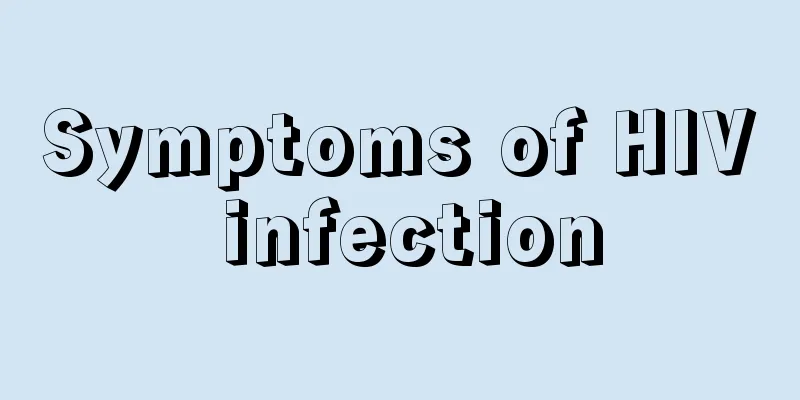How many lungs does a person have

|
Many organs in our human body are symmetrical, like our eyes and ears. Our lungs also form a pair, and both are symmetrical above the heart. However, there are some differences between the two lungs. Although they are symmetrical in position, their lobes are not the same. Our left lung has two lobes and the right lung has three lobes. This article introduces the physiological and anatomical structure of the lungs. If you want to know more about it, let’s take a look. The lungs are the human body's respiratory organs and important hematopoietic organs. They are located in the chest cavity, one on each side, covering the heart. The lungs are divided into lobes, two on the left and three on the right, for a total of five lobes. The lung meridian and lung system (referring to the trachea, bronchi, etc.) are connected to the throat and nose, so the throat is called the gateway of the lungs and the nose is the external orifice of the lungs. Physiological and anatomical structure of the lungs: The blunt and rounded end of the lung is called the apex, which protrudes upward through the upper opening of the thorax into the base of the neck. The bottom is located above the diaphragm. The surface facing the ribs and intercostal spaces is called the costal surface, and the surface facing the mediastinum is called the medial surface. The entrance and exit of the bronchi, blood vessels, lymphatic vessels and nerves in the center of this surface is called the hilum. These structures entering and exiting the hilum are wrapped together by connective tissue and are called the lung root. The left lung is divided into two lobes, the upper and lower lobes, by the oblique fissure. In addition to the oblique fissure, the right lung is also divided into three lobes, the upper, middle, and lower lobes, by a horizontal fissure. The lungs are composed mainly of a bronchial tree formed by repeated branching of the bronchi. The left and right bronchi are divided into second-level bronchi at the hilum. The area covered by the second-level bronchi and their branches constitute a lung lobe. Each second-level bronchus is divided into third-level bronchi. The area covered by each third-level bronchus and its branches constitutes a lung segment. The bronchi branch repeatedly in the lungs up to 23-25 levels, and finally form alveoli. The branches of the bronchi at all levels and the alveoli are filled with connective tissue interstitium, and blood vessels, lymphatic vessels, nerves, etc. are distributed in the connective tissue along the branches of the bronchi. The interstitium between the alveoli contains a rich capillary network. The capillary membrane and the alveoli together form the respiratory membrane. Gas exchange between the blood and the gas in the alveoli must pass through the respiratory membrane. The respiratory membrane has a large area, about 70 square meters on average. In a quiet state, only 40 square meters of it are used for gas exchange during breathing. It is an important component of pulmonary respiration. Therefore, until the respiratory membrane area is less than 40 square meters due to illness or other reasons, there will be no obvious obstruction to lung ventilation. The surface of the lungs is covered with a smooth serous membrane, the visceral pleura. Before the fetus is born, the lungs have no respiratory function, are densely structured, have a specific gravity greater than 1 (1.045-1.056), and will sink when put into water. After birth, the baby begins to breathe. The alveoli are filled with air, becoming spongy and with a specific gravity of less than 1 (0.345-0.746), so it can float in water. Doctors often use this to identify the time of fetal death and provide evidence. Alveoli: Hemispherical sacs composed of a single layer of epithelial cells. The bronchi in the lungs branch repeatedly into countless bronchioles, whose ends swell into sacs, surrounded by many protruding small vesicles, which are alveoli. The alveoli vary in size and shape, with an average diameter of 0.2 mm. An adult has about 300 to 400 million alveoli, with a total area of nearly 100 square meters, which is several times larger than the surface area of human skin. Alveoli are the main site of gas exchange in the lungs and are also the functional units of the lungs. For oxygen to diffuse from the alveoli to the blood, it must pass through four membranes in sequence: the fluid membrane on the inner surface of the alveoli, the alveolar epithelial cell membrane, the interstitium between the alveolar epithelium and the pulmonary capillary endothelium, and the endothelial cell membrane of the capillaries. These four membranes are collectively called the respiratory membrane. The average thickness of the respiratory membrane is less than 1 micron and it has high permeability, so gas exchange is very rapid. After the gas inhaled from the alveoli enters the blood, the venous blood becomes oxygen-rich arterial blood and is transported to all parts of the body through blood circulation. The carbon dioxide in the blood in the capillaries around the alveoli can enter the alveoli through the capillary walls and alveolar walls and be expelled from the body through exhalation. The surface liquid film inside the alveoli contains surfactant, which reduces the surface tension of the liquid layer on the surface of the alveoli, making the cells less likely to shrink and easier to expand during inhalation. When the lung tissue is hypoxic, the secretion of pulmonary surfactant will decrease. The edema fluid or fibrinogen that enters the alveoli can reduce the activity of its surfactant, causing widespread alveolar collapse in the lungs. Gas exchange cannot be carried out when blood flows through the capillaries of these collapsed alveoli. Clinically, newborn babies suffer from atelectasis due to a lack of pulmonary surfactant. The tissue between two adjacent alveoli is the alveolar septum, which is rich in capillaries, elastic fibers and reticular fibers. Elastic fibers surround the alveoli, giving them good elasticity. When suffering from chronic bronchitis or bronchial asthma, the alveoli are in a state of over-expansion for a long time, which will cause the elastic fibers of the alveoli to lose elasticity and be destroyed, forming emphysema and affecting respiratory function. The composition of lung alveoli: Small alveolar cells, also known as type I alveolar cells, are about 0.1 microns thick, have a basement membrane at the base, and have no ability to proliferate. Large alveolar cells, also known as type II alveolar cells, secrete surfactant (dipalmitoylphosphatidylcholine) to reduce alveolar surface tension. Lung macrophages are derived from blood monocytes. Those that engulf more dust particles are called dust cells, while heart failure cells are macrophages that appear in the lungs of heart failure patients and engulf the iron-containing hemoglobin that is broken down by hemoglobin. The alveoli are closely connected to the pulmonary capillaries. The membranes of the two are mostly fused, which facilitates the rapid diffusion of gases. The alveolar surface liquid layer, type I alveolar cells and basement membrane, thin layer of connective tissue, capillary basement membrane and endothelium constitute the so-called air-blood barrier. Alveoli: The alveolar wall is composed of a single layer of squamous epithelium, with three types of cells: A. Flat epithelial cells (type I cells), whose basement membrane is closely attached to capillaries. B. Secretory epithelium (type II cells), which protrude into the lumen or are sandwiched between flat epithelial cells and can secrete surfactant. C. Septal cells: located in the alveolar septum, when they enter the alveolar cavity they are called dust cells. There are a large number of dust particles in the cytoplasm of dust cells, which are phagocytic cells. D. Alveolar septum: It is the structure between adjacent alveolar walls, composed of connective tissue and abundant capillaries. Because the permeability of the capillary endothelium to fluid is higher than that of the alveolar cell endothelium, body fluid in patients with heart failure will leak into the connective tissue, causing interstitial emphysema. The alveoli are multifaceted vesicles, one side of which opens into the alveolar sac, alveolar duct or respiratory bronchioles, and the other sides are connected to adjacent alveoli. The alveolar walls are very thin and are covered with alveolar epithelium. The alveoli are the terminal part of the bronchial tree and are the site of gas exchange in the lungs. The alveoli and capillaries expand the surface area. |
<<: My stomach feels uncomfortable when it's hot
>>: Can cervical vertebrae cause gastrointestinal discomfort?
Recommend
Which department should I go to for cervical cancer? These three departments can make an appointment
When conducting cervical cancer screening or dete...
Early symptoms of nasopharyngeal cancer
Nasopharyngeal carcinoma is a serious disease, bu...
Does a shadow on the pancreas mean cancer? It could be another disease
In daily life, some people feel abdominal discomf...
Which part should be massaged for defecation
Many people have been troubled by the symptom of ...
Can MRI diagnosis of prostate cancer lead to misdiagnosis?
A new method for diagnosing prostate cancer is be...
Toothache causes facial swelling
Teeth are a very important part of the human body...
How can mucous cysts be prevented?
Cysts are also divided into multiple types. Cysts...
Where are the left and right common carotid arteries located?
The common carotid artery that people often talk ...
How to treat advanced lung cancer? The most effective treatment for lung cancer
Lung cancer is a highly malignant disease. Once d...
Highly differentiated colon cancer has a high cure rate
The prognosis of colon cancer is good. The total ...
How to care for advanced lung cancer? 4 nursing measures for advanced lung cancer
Lung cancer in the advanced stage cannot be compl...
What tests should tongue cancer patients undergo after arriving at the hospital
Life is much better now, but there are more disea...
Factors affecting health
With the continuous improvement of living standar...
The hazards of periventricular leukomalacia
We all know that every parent hopes to give birth...
What is the ischial tuberosity? Do you know?
The sciatic tuberosity is not a disease, but a no...









